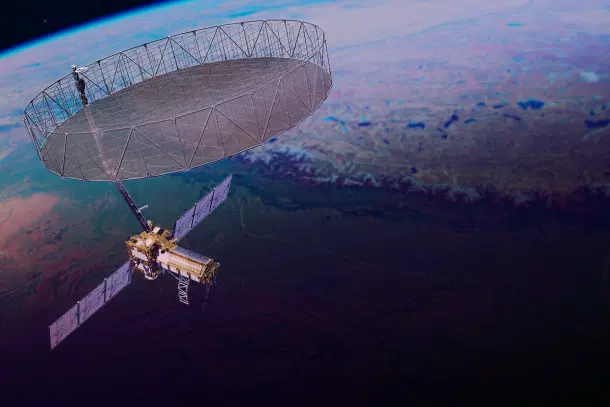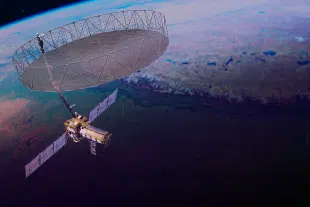News Brief
Five Things To Know About NISAR: NASA–ISRO’s Pioneering Earth Observation Satellite Mission
Arjun Brij
Jul 30, 2025, 06:00 PM | Updated 06:04 PM IST
Save & read from anywhere!
Bookmark stories for easy access on any device or the Swarajya app.


The NASA–ISRO Synthetic Aperture Radar (NISAR) mission is one of the most ambitious Earth science ventures.
Scheduled for launch on an ISRO Geosynchronous Satellite Launch Vehicle, this pioneering satellite will observe the earth with a level of precision and frequency never attempted before.
Built as a result of an extraordinary collaboration between NASA and the Indian Space Research Organisation (ISRO), NISAR will revolutionise our understanding of Earth's dynamic landscapes, fragile ecosystems, and climate-related challenges.
Here are five salient things you should know about this historic mission.
1. Studying Terrestrial and Glacial Alterations
At the heart of NISAR’s design is its ability to monitor critical changes in Earth’s terrain and cryosphere. Using synthetic aperture radar, it will transmit microwave signals and study how they bounce back from the planet’s surface.
Its 12 metre radar antenna, which resembles a massive snare drum, will revisit the same regions every 12 days, allowing scientists to track subtle changes over time.
This means researchers will now be able to determine the health of the Congo and Amazon rainforests, examine the melting of mountain glaciers, and sense small changes in the Earth's crust caused by seismic activity or volcanic eruptions.
Most importantly, NISAR can "see" through cloud cover, light rain, and even darkness at night, making observations uninterrupted.
2. The Most Advanced Radar Payload Yet
NISAR carries the most sophisticated radar system ever used in an Earth mission by NASA or ISRO.
Roughly the size of a pickup truck, the spacecraft includes dual-frequency radars, an L-band system with a 25 cm wavelength and an S-band system with a 10 cm wavelength.
Each radar specialises in detecting features of different sizes.
While the L-band is especially useful in tracking higher vegetation like trees, the S-band will be better suited for tracking shrubs and lower vegetation.
Together, they will give us an unprecedented view of soil moisture, plant vitality, thawing permafrost, and even the dynamics of Antarctica's enormous ice sheets.
3. An Unprecedented Flow of Data
Over the course of its three-year primary mission, NISAR will generate nearly 100 petabytes of data, or about 80 terabytes per day.
To put that in perspective, it's enough to fill roughly 150 standard 512-gigabyte hard drives every single day.
Given this massive volume, all data will be processed, stored, and distributed via cloud systems.
In line with NASA’s open-science commitment, this treasure trove of information will be available free of charge to researchers and the public worldwide. Meanwhile, ISRO will provide the data to Indian government agencies through its National Remote Sensing Centre.
4. Continuing a Proud Legacy of Radar Missions
NISAR is rooted in decades of joint research and work by ISRO and NASA in radar-based Earth observation.
NASA's Seasat, which was launched in 1978, was the initial synthetic aperture radar mission for scientific study.
ISRO subsequently followed up with its Radar Imaging Satellites (RISAT) series, such as RISAT‑1 in 2012 and RISAT‑1A in 2022.
NISAR stands out, however, for its dual-band system and high-resolution, wide-swath coverage, providing continuity while improving the capabilities of radar technology.
5. A Significant Achievement in Global Cooperation
The significance of NISAR historically lies in the fact that it is a collaborative mission.
It is the first Earth observation mission where NASA and ISRO have jointly designed hardware.
Engineers from both countries worked thousands of miles apart and through the disruptions of the global pandemic to bring the project to life.
ISRO’s Space Applications Centre developed the S-band radar, while NASA’s Jet Propulsion Laboratory constructed the L-band system.
The two were integrated in Bengaluru before final testing at ISRO’s facilities and eventual transportation to the Satish Dhawan Space Centre for launch.
Also Read: Explainer: What The Draft Delhi Industrial Policy 2025–35 Proposes For The Capital’s Future
Arjun Brij is an Editorial Associate at Swarajya. He tweets at @arjun_brij





